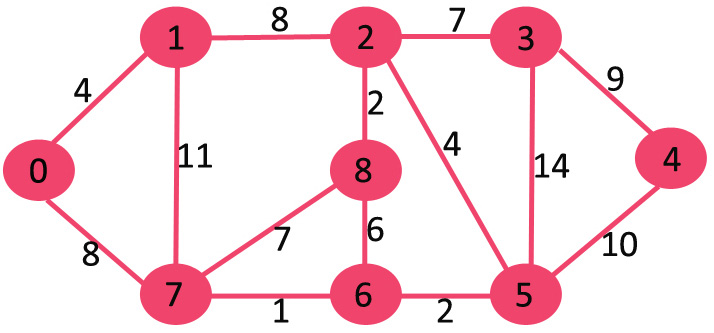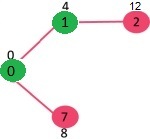- Extract the vertex with minimum distance value node from Min Heap. Let the extracted vertex be u.
- For every adjacent vertex v of u, check if v is in Min Heap. If v is in Min Heap and the distance value is more than the weight of u-v plus the distance value of u, then update the distance value of v.
Let us understand with the following example. Let the given source vertex be 0

Initially, the distance value of the source vertex is 0 and INF (infinite) for all other vertices. So source vertex is extracted from Min Heap and distance values of vertices adjacent to 0 (1 and 7) are updated. Min Heap contains all vertices except vertex 0.
The vertices in green color are the vertices for which minimum distances are finalized and are not in Min Heap

Since the distance value of vertex 1 is minimum among all nodes in Min Heap, it is extracted from Min Heap and distance values of vertices adjacent to 1 are updated (distance is updated if the vertex is in Min Heap and distance through 1 is shorter than the previous distance). Min Heap contains all vertices except vertex 0 and 1.

Pick the vertex with a minimum distance value from the min-heap. Vertex 7 is picked. So min-heap now contains all vertices except 0, 1, and 7. Update the distance values of adjacent vertices of 7. The distance value of vertex 6 and 8 becomes finite (15 and 9 respectively).

Pick the vertex with a minimum distance from the min-heap. Vertex 6 is picked. So min-heap now contains all vertices except 0, 1, 7, and 6. Update the distance values of adjacent vertices of 6. The distance value of vertex 5 and 8 are updated.

The above steps are repeated till the min-heap doesn’t become empty. Finally, we get the following shortest-path tree.

Below is the implementation of the above approach: